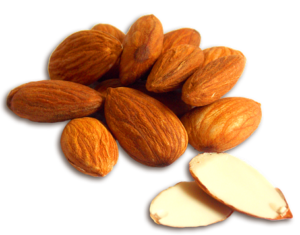Acne is the most common skin condition in the US. Retinol is often used as an acne remedy. But peeling acids are also promising acne and acne scar treatments. Mandelic Acid is an ingredient worthy of your attention. It gets the results of a robust acid but with little to no skin irritation.
Got acne? Meet Mandelic Acid.
WHAT IS MANDELIC ACID?
Mandelic Acid is a natural acne fighter and discoloration fixer.
- Mandelic acid is a very gentle AHA (Alpha Hydroxy Acid).
- Mandelic acid penetrates the skin slowly, making it suitable for even sensitive skin.
- While it is an “acid” it is very gentle and rarely causes skin irritation.
- Mandelic acid is natural, clean, green, and skin-friendly.
- Mandelic acid is useful in organic skin care product formulations.
HOW MANDELIC ACID WORKS: ACNE TO ANTI-AGING
Mandelic acid accelerates cell turnover by dissolving the tiny bonds that hold skin cells together. This microexfoliation accomplishes several skincare objectives.
ACNE
Mandelic acid is useful in acne treatment. Mandelic acid removes bacteria-trapping dead skin, which contributes to acne formation. Dead skin also dulls the complexion and makes fine lines look worse. Removing dead skin cells brightens skin.
Mandelic acid is anti-bacterial, anti-fungal, and anti-inflammatory. If you have adult acne, Mandelic acid is ideal to treat both acne and signs of skin aging. [1]
ANTI-AGING
Mandelic acid an appealing ingredient within anti-aging products. Mandelic acid is helpful for smoothing mesh-like pattern wrinkles. Mandelic acid promotes collagen production. More collagen increases skin’s elasticity and youthful appearance. Collagen counteracts sun damage by smoothing and refining the skin surface. Sun damage is the largest cause of visible signs of aging.
Mandelic acid also reduces hyperpigmentation. It lightens acne scars, sun damage, and age spots.
MANDELIC ACID VS GLYCOLIC ACID
Similarities
- Both acids are highly effective at causing rapid cell turnover.
- Both reveal younger, smoother, brighter skin.
- Both acids dissolve the “glue” holding dead skin cells.
- Both remove dead skin cells without forceful scrubbing.
- Both Mandelic Acid and Glycolic Acid are ideal for skin unable to tolerate harsh exfoliants.
Differences
A difference between the acids is that Mandelic acid has a larger molecular structure than glycolic acid. Smaller molecular structures penetrate the skin faster and deeper. [2] The larger molecular structure of Mandelic Acid gets the job done, albeit a tad slower.
If the skin can tolerate glycolic, that’s great. But if your skin gets irritated by Glycolic acid, Mandelic acid is an ideal option. Mandelic is kinder to the skin. There is little to no irritation and redness with regular Mandelic Acid use. [3]

MANDELIC ACID TIPS FOR BEST USE
- Skin using AHAs, including Mandelic Acid, is more sensitive to light. Always wear sunscreen
- To avoid irritation, choose products with 10% or less Mandelic Acid concentrations
HYPERPIGMENTATION
Some hyperpigmentation fading ingredients work best on pink undertone skin. Mandelic Acid works on the hyperpigmentation of all skin tone types.
Mandelic Acid inhibits melanin production in existing scars, age spots, and acne marks. [4] This reduces hyperpigmentation of all types on all skin tones.
Mandelic Acid A Holy Grail Ingredient
Mandelic Acid earns our “Holy Grail Ingredient” rating. It reduces sun damage, acne, and hyperpigmentation. It gently exfoliates and improves skin texture. It works on all skin tones and textures, including mature and sensitive skin. It is natural and suitable for organic product formulations.
Mandelic Acid is a Style Chicks skincare superstar!
Mandelic Acid is a great addition to a natural ingredient, organic skin care plan
REFERENCES
- Debowska, Renata & Kaszuba, Aleksandra & Michalak, Iwona & Dzwiga‚owska, Agata & Cie›ci„ska, Czanita & Jakimiuk, El bieta & Zielia„ska, Joanna & Kaszuba, Andrzej. (2015). Evaluation of the efficacy and tolerability of mandelic acid-containing cosmetic formulations for acne skin care. Dermatology Review. 4. 316-321. 10.5114/dr.2015.53419.
- Garg VK, Sinha S, Sarkar R. Glycolic acid peels versus salicylic-mandelic acid peels in active acne vulgaris and post-acne scarring and hyperpigmentation: A comparative study. Dermatol Surg 2009;35:59-65.
- Taylor MB. Summary of mandelic acid for the improvement of skin conditions. Cosmet Dermatol 1999;12:26-8
- Kessler E, Flanagan K, Chia C, Rogers C, Glaser DA. Comparison of alpha- and beta-hydroxy acid chemical peels in the treatment of mild to moderately severe facial acne vulgaris. Dermatol Surg 2008;34:45-50.


РуÑлана says
Those with redness often fear harsh skin care ingredients like acids. There’s no need to be scared of azelaic acid. Imahiyerobo-Ip says that the acid can benefit those with redness, rosacea and acne. It’s also suitable for treating hyperpigmentation and melasma.